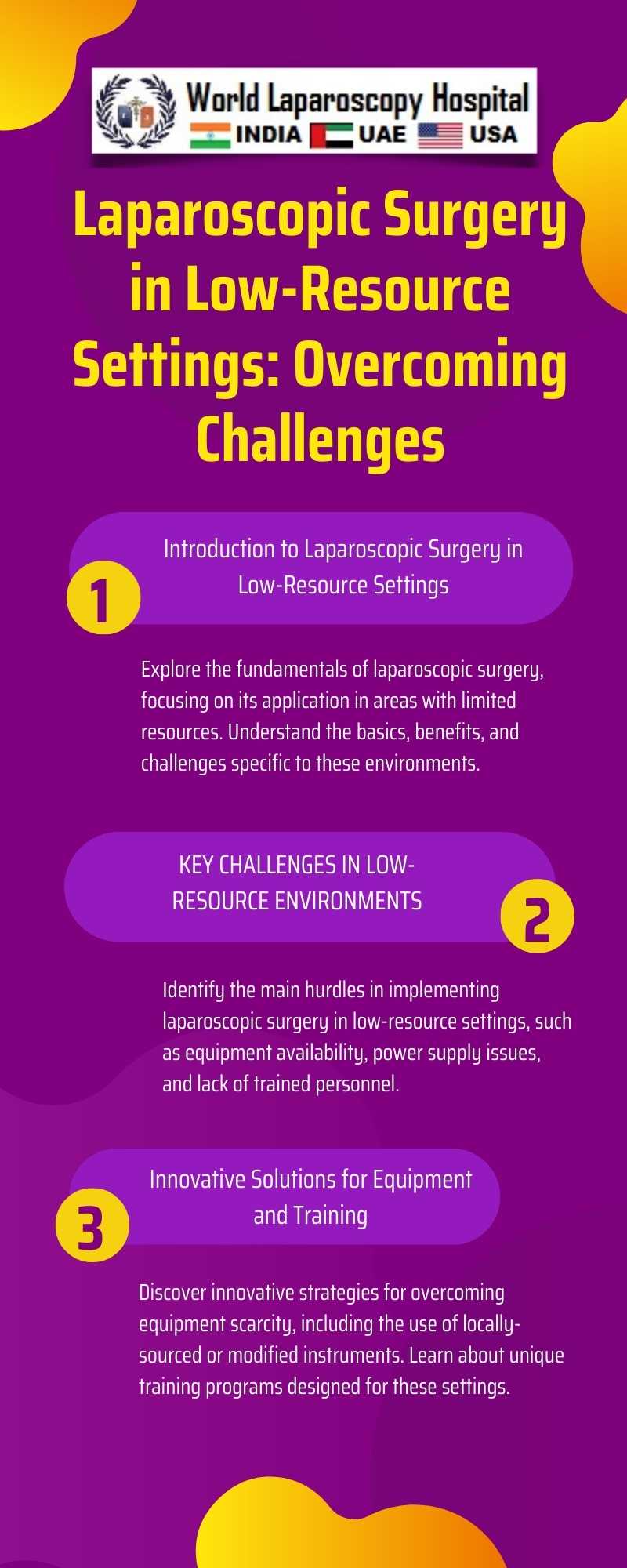Introduction
The introduction would set the stage by explaining what laparoscopic surgery is: a minimally invasive surgical technique known for its benefits like reduced pain, shorter hospital stays, and quicker recovery times. However, its implementation in low-resource settings, such as rural areas or developing countries, is fraught with challenges. This section would highlight the importance of this issue in the context of global health equity.

Challenges in Low-Resource Settings
This section would delve into the specific challenges faced in these settings:
1. Lack of Infrastructure: Discuss how the absence of advanced medical facilities and equipment hinders the adoption of laparoscopic techniques.
2. Training and Skills Shortage: Examine the gap in training and expertise among medical personnel in these areas.
3. Cost Factors: Analyze how the high cost of equipment and maintenance can be prohibitive.
4. Electricity and Sterilization Issues: Address the problems related to inconsistent electricity supply and sterilization facilities.
5. Cultural and Systemic Barriers: Consider how local cultural beliefs and systemic healthcare issues can affect the acceptance and implementation of laparoscopic surgery.
Overcoming the Challenges
The focus would then shift to strategies and solutions:
1. Innovative and Cost-Effective Equipment: Discuss the development of low-cost, durable laparoscopic instruments tailored for these settings.
2. Training and Capacity Building: Propose initiatives for training local healthcare professionals in laparoscopic techniques.
3. Partnerships and Collaborations: Suggest how collaborations with international health organizations and governments can provide necessary support.
4. Telemedicine and Remote Guidance: Explore the potential of telemedicine in providing guidance and support from experts located in different parts of the world.
5. Community Engagement: Stress the importance of engaging with local communities to understand their needs and cultural perspectives.
Case Studies and Examples
Provide real-world examples and case studies where laparoscopic surgery has been successfully implemented in low-resource settings. Highlight the strategies used, the challenges overcome, and the impact on the local healthcare systems.
Conclusion
Conclude by reiterating the importance of making advanced surgical techniques like laparoscopy accessible in low-resource settings. Emphasize that overcoming these challenges is not only a matter of technological innovation but also involves training, community engagement, and policy changes. The conclusion should leave readers with a sense of hope and a call to action for the global health community to work towards equitable healthcare access.
Reflection on the Surgeon's Role
Reflect on the role of surgeons and healthcare professionals in facilitating this transition. Highlight the importance of knowledge sharing, continuous education, and advocacy in bringing advanced surgical care to underserved populations.
This essay would provide a comprehensive overview of the challenges and solutions associated with implementing laparoscopic surgery in low-resource environments, emphasizing the role of innovation, collaboration, and community engagement in overcoming these barriers.